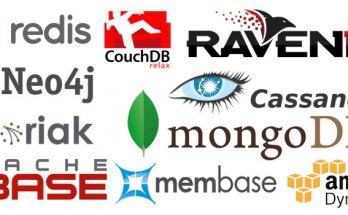Developing a Minimum Viable Product (MVP) is a strategy widely adopted by startups and enterprises alike in the realm of software development. The MVP approach prioritizes the creation of a basic version of a product, focusing on core functionalities and value propositions. This allows for early testing and validation of product-market fit, especially in the context of marketplace development. Through iterative development cycles and a customer-centric focus, businesses can collect valuable feedback, modify their product accordingly, and drive toward success with reduced risk and resource expenditure. This document will delve into the strategies and best practices to harness the full potential of an MVP in marketplace development.
Strategies for Succeeding with MVP
Early and Continuous Feedback
One of the primary strategies for succeeding with an MVP involves gathering early and continuous feedback from users. This feedback can be instrumental in identifying potential improvements, addressing technical glitches, and gauging customer satisfaction. Companies can use a variety of methods to collect this feedback, such as user surveys, feedback forms, customer interviews, and data analytics.
Prioritization of Features
Another crucial strategy is the careful prioritization of features. This involves focusing on core functionalities that deliver the most value to the user during the initial stages of development. Non-essential features can be added in subsequent iterations, based on user feedback and demand. This approach reduces the risk of wasting resources on features that may not be valuable to the end user.
Incremental Development and Iterations
Successful MVP development should also embrace the principle of incremental development and iterations. The product is built and improved in small, manageable increments, allowing for changes and adjustments based on customer feedback and market changes. This process allows the product to evolve in line with user needs and expectations, leading to a product that is highly suitable for its intended market.
Strong Communication Channels
Lastly, maintaining strong communication channels with users is a key strategy. It’s through these channels that feedback is gathered, issues are resolved, and trust is built. This can be achieved through various means such as a dedicated customer service team, social media engagement, email newsletters, and more.
Best Practices for MVP Development
When developing an MVP, several best practices can guide the process and improve outcomes.
Conduct Thorough Market Research
Before diving into the development process, thorough market research is a must. This helps to understand the competitive landscape, identify potential gaps in the market, and clearly define the target audience.
Define Clear Goals
Defining clear and measurable goals for the MVP is also essential. These goals should align with the overall business strategy and provide a metric for success.
Involve Users in the Testing Process
User involvement in the testing process ensures that the feedback gathered is from those who will use the product. This allows for more accurate and relevant adjustments to be made.
Use Agile Development Methodologies
Utilizing agile development methodologies can help to accelerate the development process and increase flexibility. Agile methodologies encourage regular reflection and adjustment, which aligns well with the MVP approach.
Embrace Failure
Finally, embracing failure as a learning opportunity is a key aspect of MVP development. Not every feature or concept will be successful, and it is important to learn from these failures and apply these lessons in future iterations.
Case Studies and Success Stories
Dropbox – Revolutionizing Cloud Storage
Dropbox is a prime example of a company that effectively used the MVP approach. The founder, Drew Houston, initially created a simplistic video demonstrating the concept of Dropbox and shared it with a tech-savvy community. The video served as their MVP, helping them gauge interest and gather feedback before investing resources into full-scale development.
Airbnb – Redefining Hospitality Industry
Airbnb started its journey with a bare-bones website that offered short-term living quarters and breakfast for those who were attending a design conference in San Francisco. The initial version of the website was their MVP, which helped them validate the demand and learn more about their customers’ needs. Today, Airbnb stands as a giant in the hospitality industry, all thanks to its customer-centric and iterative approach.
Uber – Disrupting the Traditional Taxi Industry
Uber began as a simple app, called UberCab, that connected drivers with people who needed a ride. The app was first launched in San Francisco and served only a small user base. This MVP allowed Uber to test the waters, learn from their user feedback, and iterate to improve. Today, Uber is the world’s largest ridesharing company, operating in over 800 metropolitan areas worldwide.
Instagram – From Burbn to the World’s Leading Photo-Sharing App
Instagram is another successful example of the MVP model. Originally, the app was called Burbn and had many features, including the ability to check-in, post plans, and share photos. However, the founders noticed that users were primarily using the photo-sharing feature. They decided to pivot and focus solely on this functionality, rebranding to Instagram. This MVP strategy led them to create one of the world’s most popular social media platforms.
Each of these success stories underscores the potential of the MVP approach when combined with iterative development, user feedback, and a willingness to adapt.
Conclusion
The Minimum Viable Product (MVP) approach is an effective way for companies to test the waters and validate their product’s potential. By gathering early feedback from users, prioritizing core features, embracing failure as a learning experience, and utilizing agile development methodologies, companies can maximize their chances of success with the MVP model. The examples of Dropbox, Airbnb, Uber, and Instagram demonstrate the potential of this approach when applied correctly. Ultimately, the MVP model offers a cost-effective and efficient way for companies to test their product ideas without breaking the bank. With its increasing popularity, there is no doubt that MVP will remain a popular development strategy for years to come.




